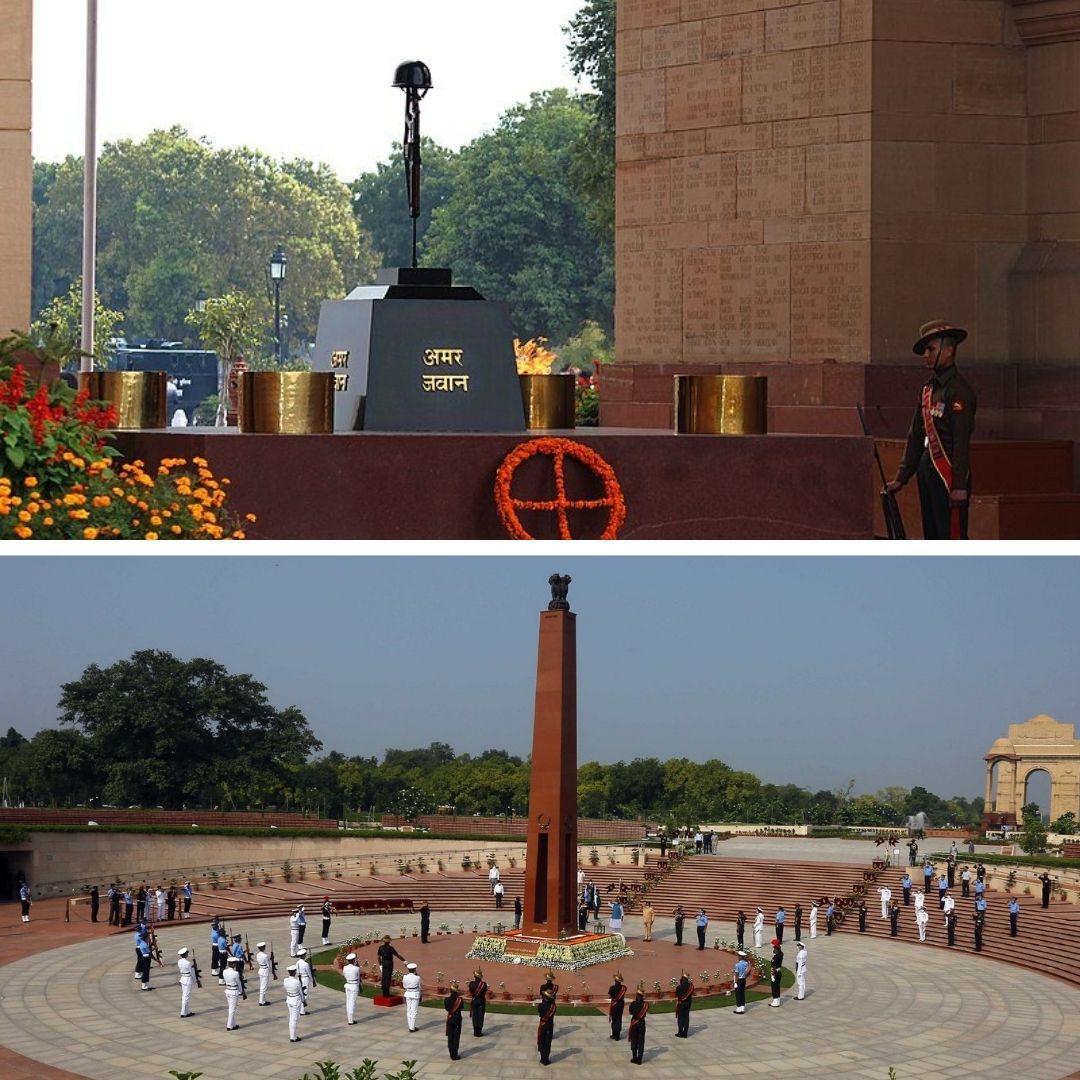
Credits: Wikipedia (National War Memorial, Amar Jawan Jyoti)
Amar Jawan Jyoti & National War Memorial Merge: Significance Of Two Eternal Flames Representing Indian Victories
Writer: Devyani Madaik
A media enthusiast, Devyani believes in learning on the job and there is nothing off limits when it comes to work. Writing is her passion and she is always ready for a debate as well.
Delhi, 21 Jan 2022 7:49 AM GMT
Editor : Palak Agrawal |
Palak a journalism graduate believes in simplifying the complicated and writing about the extraordinary lives of ordinary people. She calls herself a " hodophile" or in layman words- a person who loves to travel.
Creatives : Devyani Madaik
A media enthusiast, Devyani believes in learning on the job and there is nothing off limits when it comes to work. Writing is her passion and she is always ready for a debate as well.
According to the report, the decision has been made considering the high maintenance of the two flames and difficulty in their upkeep. Earlier, many have suggested merging the flames, given that both the establishments are at the same place (India Gate) and represent the country's martyrs.
After 50 years of burning like an eternal flame in the memory of soldiers martyred in the Indo-Pak War of 1971, the Amar Jawan Jyoti at India Gate will be extinguished forever.
It will now be merged with the National War Memorial's torch during a ceremony on Friday, January 21, in the afternoon. According to the NDTV report, Integrated Defence Staff chief, Air Marshal Balabadhra Radha Krishna, will be presiding over the event and merging the flames.
Why Are Flames Being Merged?
According to the report, the decision has been made considering the high maintenance of the two flames and difficulty in their upkeep.
Earlier, many have suggested merging the flames, given that both the establishments are at the same place (India Gate) and represent the country's martyrs.
Amar Jawan Jyoti
Built in 1972, the Amar Jawan Jyoti is a memorial established to commemorate India's victory and soldiers who died in the Indo-Pak War of 1971. The monument has an inverted bayonet and a soldier's helmet over it, with the eternal flame burning inside it.
The army has called the memorial an 'inseparable' part of the country's history. On national days like Republic and Independence, the chiefs of tri-services (Indian Army, Indian Navy, Indian Air Force) paid homage to the martyrs.
National War Memorial
Spread over 40 acres of land, the National War Memorial was built adjoining the iconic India Gate complex, by the government of India, in February 2019, in honour of the soldiers who fought for the country's independence.
The monument was built after multiple considerations by the defence ministry and the centre. It is surrounded by four concentric circles - Amar Chakra, Veerta Chakra, Tyag Chakra and the Rakshak Chakra with the names of 25,942 soldiers inscribed in golden letters on granite tablets.
At the centre, there is an obelisk, the eternal flame and six murals in bronze depicting prominent battles of the Indian Army, the Navy and the Air Force, and personnel who lost their lives in different operations.
Where It All Resides
The India Gate Memorial, also known as the Delhi memorial, was built by the British government in memory of the soldiers of the British Indian Army. They died in the First World War (1914 -1921).
It is also dedicated to soldiers killed in action in the Indo-China War in 1962, the Indo-Pak Wars in 1947, 1965 and 1971, Indian Peace Keeping Force operations in Sri Lanka, and the Kargil Conflict of 1999, and so forth.
Also Read: My Story: 'Successful Climbers Don't Perish In Mountains, They Come Back To Tell Their Stories'
 All section
All section














